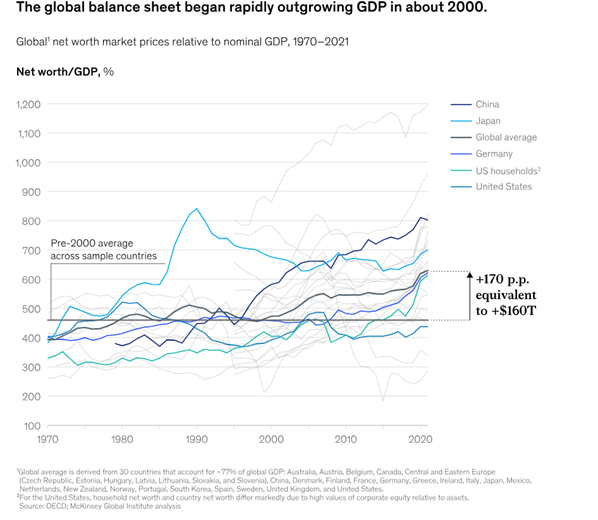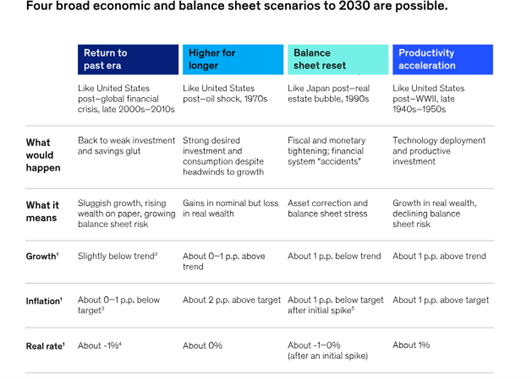
In the dynamic realm of modern business evolution, a key takeaway from our exploration of digital transformation and productivity acceleration is the critical role strategic partnerships play in shaping a prosperous and resilient future. The intersection of digitalization and productivity growth is not merely an option but a strategic imperative for sustained success.
Digital transformation has emerged as the linchpin for productivity acceleration, demonstrated through compelling case studies which underscore the transformative power of digitalization in optimizing revenue, profitability, and customer loyalty.
The article further delves into digital engineering productivity, showcasing its vital role in navigating economic challenges. A detailed case study within an advertising technology company illustrates the intricate relationship between digital transformation, digital engineering productivity, and organizational success.
In the rapidly evolving landscape of modern business, the paradigm shift towards digital engineering transformation has become an imperative for organizations seeking sustainable growth and competitiveness. At the heart of this transformation lies the pivotal role of productivity acceleration, serving as the linchpin that either propels or hinders the success of businesses in the digital age. The intersection of digitalization and productivity acceleration is a critical nexus that demands attention, analysis, and strategic consideration.
Productivity Acceleration To Decode The Great Squeeze Conundrum
Examining the last two decades exposes a staggering growth in paper wealth, approximately $160 trillion, fueled by asset price inflation that outpaced real economic output. Despite this apparent prosperity, the era witnessed sluggish growth, increased inequality, and a notable decline in productivity growth, dropping from 1.8% to 0.8% in G-7 countries between 1980 and 2018.

Between 2000 and 2021, asset price inflation intensified, creating a precarious imbalance as paper wealth outpaced the real economy. This period saw each $1.00 in net investment generating $1.90 in net new debt, leading to a global balance sheet expansion growing 1.3 times faster than GDP. The trend accelerated during the pandemic, resulting in global wealth relative to GDP growing faster than in any two-year period over the past 50 years. New debt creation escalated to $3.40 for each $1.00 in net investment.
This cycle highlights a perilous trend, emphasizing the distinction between paper wealth and real wealth. Persistently elevated inflation, driven by fiscal and monetary support, poses a tangible threat, potentially causing U.S. households to lose $8 trillion in real terms. Excessive tightening measures could trigger a global balance sheet reset, potentially causing a loss of up to $31 trillion for U.S. households.
Amidst this scenario, the imperative solution emerges: productivity acceleration. This scenario holds the promise of delivering an additional $11 trillion in real wealth to U.S. households alone by 2030. Proposed by the McKinsey Global Institute (MGI), this scenario envisions productive investment and technology adoption driving accelerated productivity growth, akin to the late 1990s and early 2000s. Real, sustainable wealth creation becomes the focus through increased investment in digital and automation technology, reimagined supply chains, successful industrial policy, and leveraging emerging economies. The emphasis shifts from illusory paper wealth to genuine, sustainable growth.

The urgency of prioritizing productivity growth is accentuated as it emerges as the essential antidote to escalating debts, inflation, and the precarious nature of paper wealth. Productivity acceleration becomes not only a solution but a critical imperative, offering a pathway to authentic economic growth and the preservation of a healthy, sustainable global balance sheet.
See also: Finance Leaders Are Ready for Modern Data Strategies
Digital Transformation Is Key For Productivity Acceleration
In the realm of contemporary business challenges, such as the growth of paper wealth, the pivotal solution lies in addressing issues directly impacting the competitive strength and sustainability of enterprises across industries. To make a business synonymous with productivity acceleration, there is only one silver lining: Digital transformation.
Research by Deloitte underscores that industries grappling with technological disruptions, evolving consumer behaviors, and intensified global competition urgently require transformation. Failure to address these challenges could result in stagnation, diminished market relevance, and erosion of competitive advantages.
Industries overcoming these challenges through transformative initiatives not only endure but flourish. Research highlights a robust correlation between the strategic embrace of digital technologies, operational efficiency improvements, and overall industry resilience. This underscores the necessity for organizations to proactively embark on comprehensive transformations to fortify their positions amid overarching industry challenges.
A critical concern within this landscape is revenue optimization, as highlighted by a Forbes study linking digital transformation to enhanced revenue and margin improvements. The integration of advanced technologies facilitates the identification of new business models, untapped markets, and innovative revenue streams. These findings underscore the intrinsic connection between strategic transformation and the potential for substantial economic growth.
Case in Point is Chick-fil-A, one of the fastest-growing restaurant chains in the U.S., and it recently underwent a digital transformation to improve decision-making based on predictive analytics on location and market analysis. Becoming more data-centric with a GIS platform, which stands for a geographic information system (GIS) that creates, manages, analyzes & maps all types of data, the organization has gained billions of data points. This has led Chick-fil-A to open stores in new markets without diluting the brand, with revenue estimated at more than $8 billion, according to QSR.
Considering the impact of transformation on brand value, McKinsey’s Finalta benchmark elucidates that digital leaders create significantly more shareholder value than laggards. This is attributed to the enhanced capabilities of digitally transformed entities to adapt to market trends, proactively innovate, and deliver heightened customer experiences, establishing the preservation and elevation of brand value as integral drivers for transformation.
In early 2016, the LEGO Group benefited from digitalization in many ways, such as a business initiative called “LEGO Light” to implement SAP and underlying technology infrastructure as a common technology platform across the business. Many other transformations include digitizing supply chain processes, centralizing information streams, collaborating with retail customers, breaking down company silos, and promoting team interoperability (15). Consumer demand fueled sales of LEGO blocks with video games and programmable LEGO robots. Simultaneously, the desire for online connection led to widespread enrollment in LEGO online communities and a growing library of fan-produced LEGO YouTube videos. Internally, integrated supply chain and product lifecycle management systems expedited product delivery to stores on an as-needed basis.
Crucially, customer loyalty is revealed as intricately tied to an organization’s ability to undergo transformation. Industries aligning their strategies with digital transformation witness a marked increase in customer satisfaction and loyalty. The cultivation of personalized, seamless, and responsive interactions becomes a cornerstone for customer loyalty, positioning it as a direct outcome of strategic transformation efforts.
One of the most significant cases in point would be Mayo Clinic. The organization has been responsible for integrating several beneficial digital transformations such as interactive medical care plans, and evidence-based guidance within a web-based platform incorporating video which has resulted in improved patient care and customer loyalty for Mayo Clinic.
In addition to revenue optimization, another critical challenge within this landscape is profitability, further highlighting the necessity for digital transformation. Recent data reported by the SAP Center for Business Insights and Oxford Economics show that 80% of organizations that have completed digital transformation report increased profits, while 85% say they have increased their market share compared to their non-digitally transformed counterparts. This underscores the pivotal role of digital transformation in enhancing financial performance.
Profitability challenges often stem from inefficiencies in operations, resource utilization, and outdated business models. Digital transformation addresses these inefficiencies by streamlining processes, optimizing resource allocation through data-driven insights, and fostering innovation in business models. According to McKinsey’s Finalta benchmark, which tracked the performance of 80 global banks every year from 2018 to 2022 against a set of 50 normalized metrics, such as digital/mobile adoption, digital sales by banking product, number of people in contact centers, and number of branches. They found that digital leaders are creating much more shareholder value than laggards, often by creating value that’s hard to copy.
Bank of America Corporation (BofA) has been leveraging artificial intelligence, blockchain, digital payment technologies, and robotic process automation to digitally transform both its front and back-office operations. The annual ICT spending of BofA was estimated at $5.8 billion for 2023 (12). 49% of all sales at BofA are now digital, up 46% YoY. BofA now conducts 1.5 million digital sales annually.
In essence, the integration of digital transformation emerges not only as a solution to industry challenges but as a pivotal catalyst for productivity acceleration across diverse operational domains. The intersection of digitalization and productivity becomes a transformative force, offering a comprehensive strategy to navigate the complexities of the modern business landscape, drive sustainable growth, and decode the conundrum of the great squeeze on productivity.
Digital engineering productivity for digital transformation
In the landscape of economic evolution, the trajectory of productivity becomes evident through compelling data. Over the last three decades in the United States, the manufacturing sector experienced remarkable growth of 71.8% in output, concomitant with a significant reduction in employment by 30.7%. This intriguing phenomenon highlights a paradigm shift: in 2016, the U.S. produced nearly 72% more goods than in 1990, achieved with only about 70% of the workforce. Crucially, during this period, manufacturing labor productivity surged by over 140%, underlining the transformative impact of automation on employment in the manufacturing sector (Ref. NCCI: Impact of Automation on Employment in Manufacturing).
As the global economic landscape grapples with the prospects of a mild or potentially more profound recession, the focus intensifies on industries that can resiliently weather these economic challenges. Recognizing that productivity enhancements in sectors like agriculture and manufacturing have plateaued, attention turns towards an industry on the brink of irreversible and disruptive transformation: the Information Technology (IT) sector (14).
In this dynamic landscape, embracing and advancing Digital Engineering Productivity is not just a strategic choice; it is a necessity for businesses aiming not only to survive but to thrive in the face of evolving economic challenges. The ability to harness the potential of digital engineering practices will not only drive efficiency but will also be a cornerstone for future competitiveness, ensuring sustainable growth and resilience in an ever-changing global economy. As we embrace the era of digital transformation, Digital Engineering Productivity stands as a beacon, guiding industries toward a future where innovation and productivity are not just aspirations but integral components of success.
Conclusion
In the dynamic realm of modern business evolution, a key takeaway from our exploration of digital transformation and productivity acceleration is the critical role strategic partnerships play in shaping a prosperous and resilient future. The intersection of digitalization and productivity growth is not merely an option but a strategic imperative for sustained success.




























